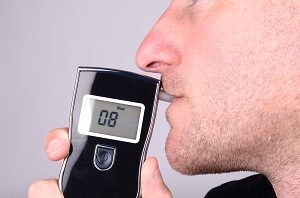Legally Reviewed By:
Brian P. Gabriel, Esquire
Law enforcement departments throughout the country rely on a variety of evidential breath tests approved by the National Highway Traffic Safety Administration (NHTSA) to determine if a DUI suspect has been driving under the influence and is over the legal limit of 0.08%. In Florida, the device approved by the Florida Department of Law Enforcement for evidentiary use is the Intoxilyzer 8000, a machine which relies on infrared light absorption to detect the presence of alcohol in a person’s breath.
Florida has used the I-8000 since the early 2000s, but the machine continues to provide unreliable results. Oftentimes, this is due to improper breath testing procedures committed by those who are qualified to calibrate the machines and those qualified to administer breath tests.
What are proper breath testing procedures?
To conduct a breath test, the operator or “user” must interact with the machine. The Intoxilyzer 8000 must display “READY MODE” before he or she can press “START” to begin. Prior to the 20 minute observation period, the operator must record or verify a series of important data in order to proceed with the test. The I-8000 prompts the operator to insert the following pieces of information:
- The user’s (operator’s) name: last name, first name, and middle initial
- The agency the user works for
- The current time and date
- The last agency inspection date
- The dry gas cylinder lot number and expiration date (a dry gas and alcohol solution is used to test the Intoxilyzer 8000 to ensure accuracy)
- The start of the observation period
- The name of the subject
- The subject’s driver’s license number
- The subject’s date of birth and sex (male or female)
- The arresting officer’s name and agency
- The time of the arrest
- The violation code
Only after the above information is submitted can the test proceed to the observation period, after which there is a diagnostic test.
In Florida, every breath test must include a 20 minute observation period. During this time, the operator, who must be certified to conduct the test, must watch the subject for twenty minutes to ensure that the subject does not ingest anything, as well as the subject must not regurgitate or burp, as these actions can bring up residual mouth alcohol from the throat and contaminate the breath sample.
It is expected that each machine receives proper calibration and regular maintenance. Upon the conclusion of the observation period, there is a diagnostics test. If the result is OK the breath test sequence can begin:
- Air blank*
- Control test
- Air blank
- First subject sample
- Air Blank
- Wait
- Air blank
- Second Subject Sample
- Air blank (at this point, if the two breath samples deviate more than 0.02 g/210L, a third subject sample must be taken)
- Control test
- Air blank
- Final diagnostics check
* The air blank ensures the device takes a reading of its own alcohol sensor and sampling chamber to confirm there is no remaining alcohol from previous tests. It must always read 0.000 before moving on to the next step.
The test subject receives 3 minutes to provide a minimum acceptable breath sample. The machine is supposed to know when to start measuring deep lung air, at which point the reading that picks up the amount of alcohol present will plateau. Breath alcohol concentration (BrAC) from the alveoli sacs nestled in the lungs most closely resemble one’s true blood alcohol concentration (BAC).
Several strong DUI defenses are based on the Intoxilyzer 8000 and the proper testing method. Attorney Brian P. Gabriel has over 30 years of experience defending DUI cases in Palm Beach, Martin and Broward Counties. He has dedicated years to uncovering the true facts of Florida’s approved breath test for evidentiary use. If you have been arrested for DUI in Florida and have tested with the I-8000, call 561-622-5575 today for a free case evaluation.



